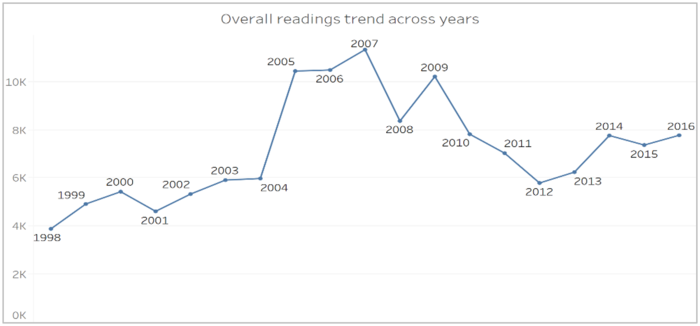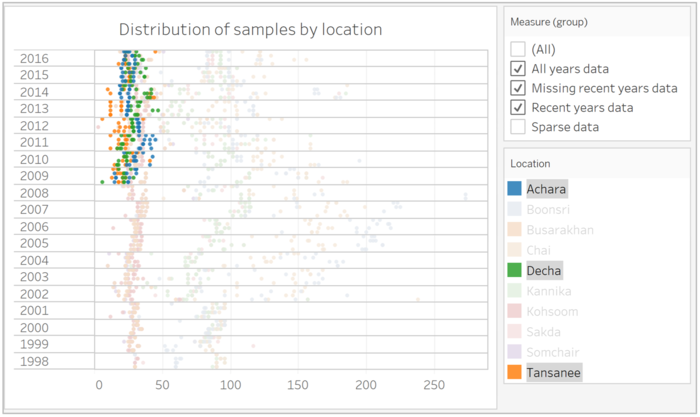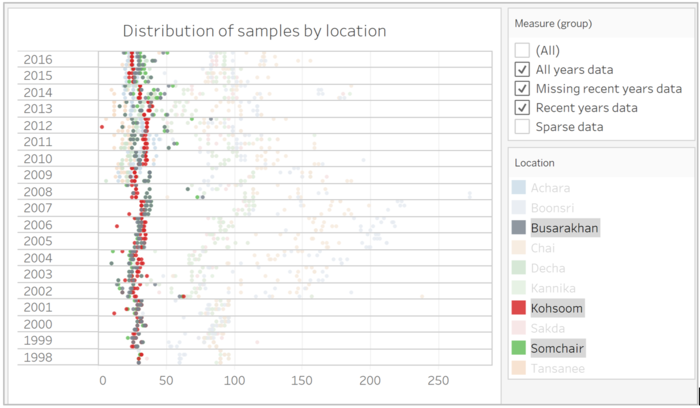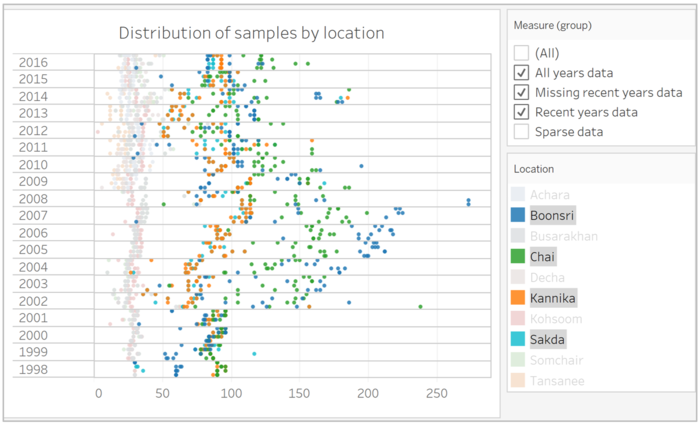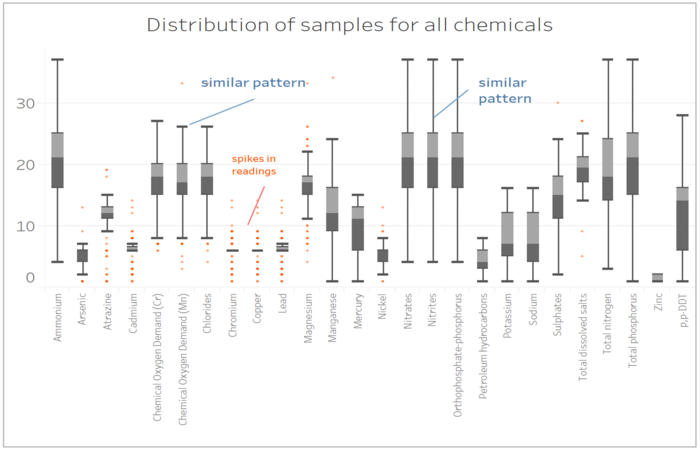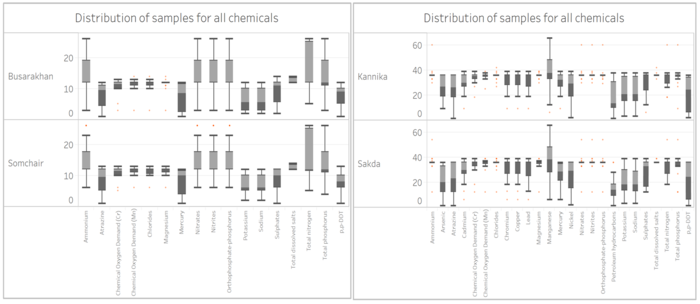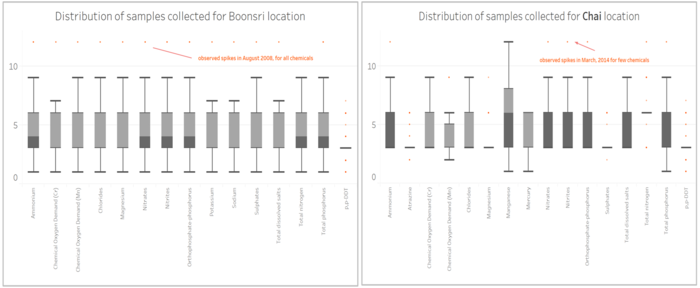Difference between revisions of "ISSS608 2017-18 T3 Assign Harisingh Q1"
| Line 61: | Line 61: | ||
The chemical-wise distribution for individual locations gives us more insights on observed peaks in number of samples. '''In Chai''', the spikes were most frequently observed in '''March 2014''' for Ammonium, Nitrates, Nitrites, Orthophosphate, Total Nitrogen, and Total Phosphorus. However, '''in Boonsri''', the spikes were frequently observed in '''August 2008''' for below highlighted chemicals. | The chemical-wise distribution for individual locations gives us more insights on observed peaks in number of samples. '''In Chai''', the spikes were most frequently observed in '''March 2014''' for Ammonium, Nitrates, Nitrites, Orthophosphate, Total Nitrogen, and Total Phosphorus. However, '''in Boonsri''', the spikes were frequently observed in '''August 2008''' for below highlighted chemicals. | ||
| − | [[File | + | [[File:h_chart10.png|700px]] |
Revision as of 03:58, 9 July 2018
To characterize the past and most recent situation with respect to chemical contamination in the Boonsong Lekagul waterways, we can focus our attention on how the number of readings has varied with time for different chemicals. This is based on my understanding that changes in number of observed readings for a chemical is analogous to its contamination.
Overall Trend Chart
The below time-series plot suggests that number of readings observed were not consistent for the given time-frame. Though I notice an upward trend in number of readings until 2007, there has been a drop into readings in recent years.
Sample Analysis by Location
The dot plot gives us more insight on how the readings were collected at location level. Surprisingly, in Achara, Decha, and Tansanee, water samples have been collected since 2009 onward.
On the other hand, for Busarakhan, Kohsoom, and Somchair, the readings were collected consistently across years.
Lastly, in remaining locations, we notice relatively very high variation in number of readings. Interestingly, all of these locations lie on same river path where different streams converge.
Distribution Analysis by Chemical
The chemical-wise distribution, using box plot, shows us that chemicals such as Nitrates, Nitrites, and Orthophosphate seem to have similar distribution in term of number of samples collected, regardless of location. Likewise, the outliers for chemicals such as Chromium, Copper, and Lead suggests that these chemicals experience spikes in number of samples at frequent intervals.
Is it a coincidence? For below pair of locations, the distribution of samples collected looks very similar. This information can be helpful for investigators who attempt to perform deeper analysis of location-wise relationship in chemical contamination.
The chemical-wise distribution for individual locations gives us more insights on observed peaks in number of samples. In Chai, the spikes were most frequently observed in March 2014 for Ammonium, Nitrates, Nitrites, Orthophosphate, Total Nitrogen, and Total Phosphorus. However, in Boonsri, the spikes were frequently observed in August 2008 for below highlighted chemicals.

